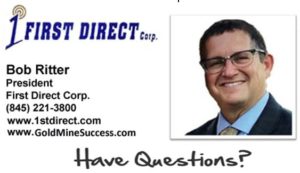 As popular as CRM software is there’s still a large portion of firms that rely on spreadsheets and email for the functions of a CRM application. After all, why pay for CRM when you already own those products.
As popular as CRM software is there’s still a large portion of firms that rely on spreadsheets and email for the functions of a CRM application. After all, why pay for CRM when you already own those products.
Since spreadsheets and email have been around so long, many people and firms are comfortable with what they know. So, the thought of switching to CRM seems like just another piece of software to have to learn and use. Why bother? What incur the expense?
It’s hard to argue with success, and if a firm is happy and successful without CRM it is reasonable for them to keep using what works for them. Of course, there is something to be said for the opportunity to improve the way you work, especially if the results will increase success.
In this article I want to bullet some of the challenges/weaknesses of using spreadsheets and email alone. But let me be clear. I am not arguing that you do away with either spreadsheets or email. They are essential business tools and CRM is not a replacement for them. CRM is a compliment – it addresses their limitations.
-
A spreadsheet is not a database – is does not lend itself to shared simultaneous usage. A spreadsheet presents problems when multiple users have to update and view the data at the same time.
-
Spreadsheets are flat versus relational – this makes it difficult to associate one-to-many data to record. (Documenting multiple interactions concerning one row on a spreadsheet. )
-
Spreadsheets don’t lend to linking related information such as emails, other files, etc.
-
Rolling up data from multiple spreadsheets is problematic which limits reporting analysis.
-
Spreadsheets with many columns creates long rows that are not user-friendly.
-
Spreadsheets do not lend to documenting all types of interactions especially when lengthy notes and explanations are called for.
-
Spreadsheets do not log changes and updates and lack an audit trail.
-
Spreadsheets are easily copied and taken out of the office. This presents serious problems with security and theft of proprietary information.
-
Spreadsheets lack the numerous features of CRM which help with marketing, delegation, workflow, automation and much more.
-
Spreadsheets can be easily over-written and lead to tremendous loss of information.
The list goes on, but I believe this short list of 10 issues with spreadsheets makes a sufficient case by itself for incorporating a CRM solution.
When it comes to email, most of the items above apply as well. But any CRM application today is designed to work with popular Email applications such as Outlook, or have their own built in email functionality. It’s not a matter of dropping your email — CRM leverages your email.
Ultimately, a business needs to put a value on the potential benefits of CRM in order to justify the cost. While I have not quantified that value of CRM in this article, I hope that it is possible for readers to use common sense and come to the conclusion that more and more firms have already regarding the need for CRM.
CRM isn’t a fad. It’s a competitive advantage –and firms that are working smarter and more productively with CRM are all to happy to eat the lunch of organizations competing against them without CRM.
This article is not an attempt to make the case of one CRM application over another. It is written to simply make the case for CRM in general.
One of the best ways to appreciate what CRM can do for you, and why it is a valuable tool which compliments spreadsheets and emails, is to have a demonstration of a CRM application and speak to a CRM expert. First Direct Corp. is happy to do so for any firm that is open to improving their organization’s team work, marketing and sales. Contact us today at (845) 221-3800.


